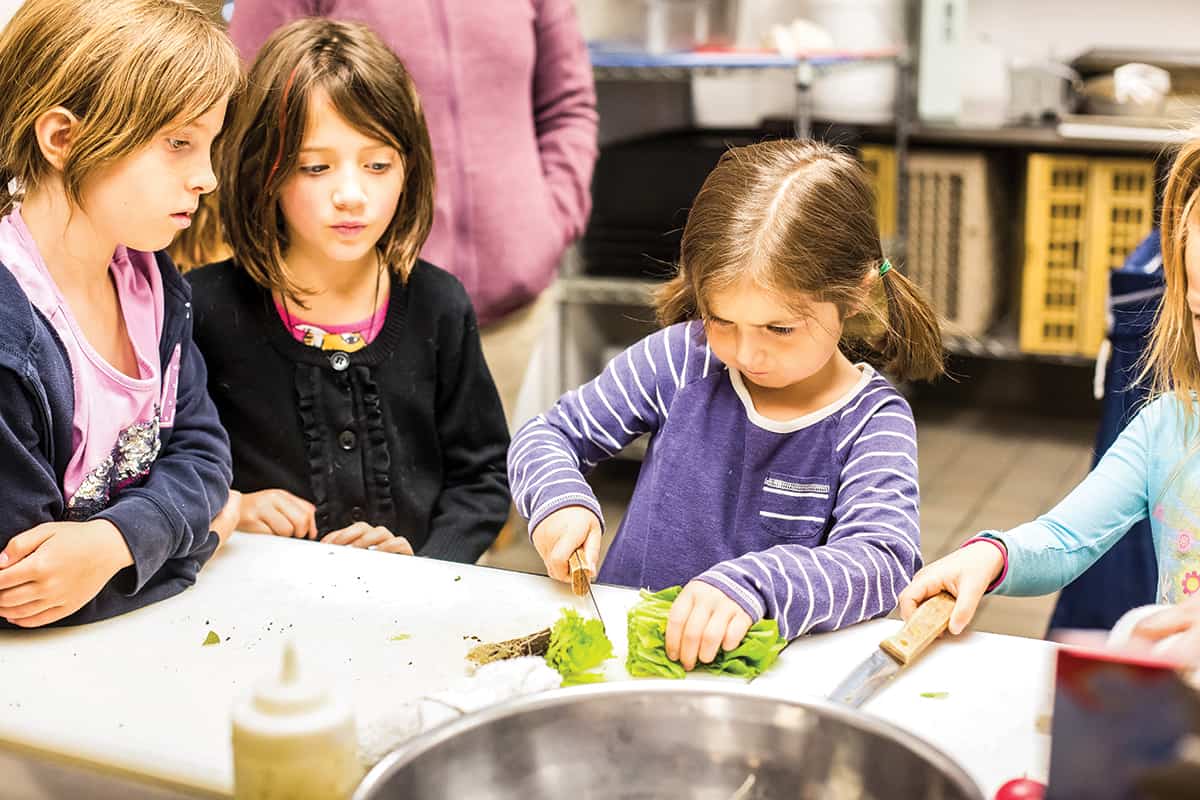By Tibby Plasse // Photography by Rebecca Vanderhorst
—
It’s no secret that growing food at the forty-third parallel is incredibly difficult. However, since 2006, Full Circle Education has been providing a cornucopia of options for eating well and eating regionally, despite a chance of frost nearly every day of the year in the Tetons. The organization shares its mission by hosting community outreach events, cultivating partnerships with local schools, and building outdoor garden classrooms that connect students to their food source.
“Spring hoop-house salad parties and fall harvest pizza parties are interwoven with a robust year-round garden curriculum where students grow to eat, eat to learn, and ultimately learn to eat,” says Travis Gay, Full Circle’s executive director. “This process fosters vital connections to the natural world and to our community.”

Last spring, Full Circle and Alta Elementary School collaborated on a seasonal pizza project in which students discovered that there’s more than one way to grow food, including some ways that are literally out of the box—or out of a container.
Through the lens of the pizza party (students helped cook pizzas in a wood-fired oven provided by In Season Woodfired Pizza), the children learned how some local producers circumvent the Tetons’ challenging growing conditions by using indoor or seasonal options. They visited Morning Dew Mushrooms’ retrofitted garage and Clawson Greens’ shipping-container grow rooms in Tetonia, Idaho, Mad Mountain Greenery’s grow office in Driggs, Idaho, and Purely by Chance’s seasonal poultry operation in Alta, while tracking the commercial growing process from seed, spore, and chick to plate.
These seemingly modest operations are producing a significant amount of food. For example, Clawson Greens has 20,000 plants in a 40-by-60-foot space, according to its owner, Dave Riddell.
“I can grow a lot of food in a small place year-round because I can control the climate of my containers,” he explains. “This also gives me the freedom to grow varieties that are not available at the store, such as bib lettuce and oakleaf.”
A producer’s ability to provide volume for the local food scene benefits the community, and the students were given special insight into what it means to be a contributing wholesale producer.
“I think they were surprised by how small a space we were crammed into,” says Delancy Hively of Mad Mountain Greenery. “But it’s filled entirely with living plants.”
Growing in 10-by-20-inch trays with organic soil and grow lights, Mad Mountain Greenery’s microgreens operation reveals how easy it is to eat well outside of a tropical climate—or even without an outdoor growing space—and still have a variety of greens. Mad Mountain grows broccoli, fava beans, cabbage, pea, sunflower, and kale shoots.
“We had the students plant pea shoots, because even if someone is iffy about vegetables, everyone enjoys pea shoots,” says Hivley. “They also grow fast.”
Alta Elementary’s multiday food exploration project culminated in the preparation of a community meal at Warbirds Restaurant in Driggs. Students were assigned stations in the commercial kitchen area and received hands-on restaurant line training by executive chef and parent David Hugo, and his wife and local food advocate, Lauren.
“We organized the students into stations by grade that included dough rolling, pizza assembly, dessert creation, salad prep, and front of the house,” explains Lauren. “I especially enjoyed the salad station where I taught students how to safely slice and dice the lettuce and vegetables we harvested from the greenhouse. It felt particularly powerful for them to prepare the foods they harvested and grew.”
Adults, can buy a freight container kit or grow pea shoots on their windowsill, too. Anyone, really, could plan a dinner party with friends and family members selecting grown and harvested ingredients for the menu. But what was the takeaway for the Alta Elementary students after they traveled from farm to fork?
Fourth grader Annika Trotter said the field trip helped her to think differently about producers, but also about their school garden: “We worked hard all year growing our own garden, and then saw how other local farmers worked hard on their farms, too. It was so fun to take fresh, local food and make a delicious meal. I realized, when I am older, I want to grow my own garden.”
For additional programming and events, visit tetonfullcircle.org.
Grow, Pick, and Process your own with Full Circle Education
—
- May 30: Raising Backyard Chickens
- June 6: Raising Meat Chickens
- June 13: Processing Meat Chickens
- June 20: Edible Plant Walk
- July 18: “No-Till” Gardening
- August 8: Hide Tanning
- October 24: Field Dressing your Hunt
- October 30: Butchering your Kill






